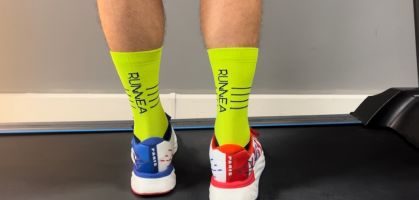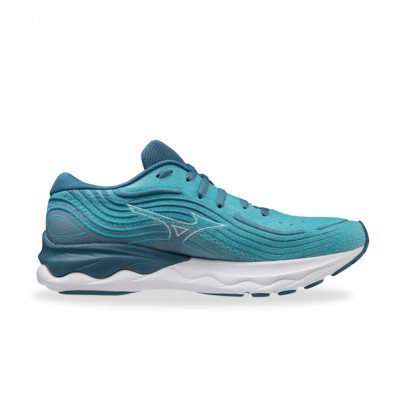What are training zones? In sports training we usually divide the different work intensities into training zones, which in turn will be associated with different adaptations. The most common way to determine these zones is by performing different types of tests, either in the laboratory or on the track, depending on different variables; heart rate, speed, power, etc.

Understanding the need to train one zone and not another is fundamental to improve our performance. Sometimes, we set ourselves or set paces and intensities at which we have to develop the training, but we are not aware of what is behind these rhythms.
Understanding the need to train one zone, and not another in a training session or over a period of time, is fundamental to improving our performance.
What are training zones?
We know that the faster we go, the shorter the time at which we can exercise at that intensity will be. Exercising at specific intensities, and marked in training, responds to the need to seek physiological adaptations that allow greater performance. Therefore, our sessions should vary depending on the final objective or the moment of the season in which we find ourselves.

To make this more understandable, in sports training we usually divide the different work intensities into training zones. In turn, these will be associated with different adaptations. Therefore, it is of vital importance to know these work zones.
How to calculate training zones?
The most common way to determine these zones is by means of different types of tests, either in the laboratory or on the track. Thanks to the data extracted from these tests , it will be possible to establish the work zones according to different variables (heart rate, speed, power, lactate concentration, etc.).

Understanding the need to train one zone and not another in a training session or over a period of time is essential to improve our performance.
What are the training zones?
One way to clarify this idea can be on the wrist, almost all runners have a sports watch or heart rate monitor and it will show our heart rate associated with 5 zones. If we start running and we go from zone 1 to 5 we will have worked a little of everything, but nothing in particular.

This is why it is necessary to establish the work zones and maintain them, if the session demands it. In this way we will ensure to maintain an ideal volume of work in the marked zone and obtain a greater degree of adaptations.
- As I mentioned earlier, almost all our Heart Rate Monitors & Sports Watches allow us to individualize the heart rate zones and the speed associated with these 5 zones, but there are various proposals in the literature to extend these 5 zones up to 8. The higher our level, the need to divide the intensity we are able to develop will be key to a correct training process.
- In the same way, in people with little training, a work program based on 3 work zones may be sufficient. This idea is based on the impossibility of these novice athletes to maintain a steady pace over a long period of time.
In this post we will present several proposals for training zones made by various coaches and researchers. Only those that use variables such as heart rate and/or maximum aerobic speed (MAS) or speed associated with maximum oxygen consumption are shown.
Table 1 shows several proposals for establishing training zones based on heart rate and/or MAS.
Table 1. Various proposals for training zones.

The choice of one proposal or another will be based on different criteria. For example, type of event, level of the athlete, experience, etc. The choice of any of them is valid. At certain times, we may think that, for many of us, anaerobic zones (>100% VAM) are not important and therefore, it is not worthwhile to establish these zones. This thought must be banished, it will be very interesting to be able to work punctually intensities above 100% of the VAM, with the aim of continuing to progress.
Because of this, it will be necessary to understand that if we want to work at intensities close to or above our maximum heart rate, we must base ourselves on the speed developed, since we will not be able to measure these intensities with the pulsometer. Regarding training adaptations:
- The first zones of these proposals are characterized by being intensities of regeneration and/or improvement of aerobic efficiency.
- The central zones have a greater influence on the ability to improve aerobic glycogen consumption and improve systolic volume (among many other adaptations). Work in the high aerobic zones (VAM) will tend to increase mitochondrial and capillary density, as well as improve maximal oxygen consumption.
These are just a few examples of the adaptations that can come with working a specific zone or several zones. Obviously, the longer we work on the same zone, the greater the adaptations will be. However, continuously working a single zone can cause other adaptations to be lost. It is therefore necessary to correctly sequence the content of the training sessions during the weeks. In other words, answer: What do I want to improve? And when is it necessary to work this/these zone/s?
Bibliography
- Pallarés, J. G., & Morán-Navarro, ; (2012). METHODOLOGICAL APPROACH TO THE CARDIORESPIRATORY ENDURANCE TRAINING METHODOLOGICAL APPROACH TO THE CARDIORESPIRATORY ENDURANCE TRAINING. J Sport Health Res Journal of Sport and Health Research.
- Anta, R. C., & Esteve-Lanao, J. (2011). Training load quantification in triathlon. In Journal of Human Sport and Exercise. https://doi.org/10.4100/jhse.2011.62.03.
Read more news about: Running Training






















